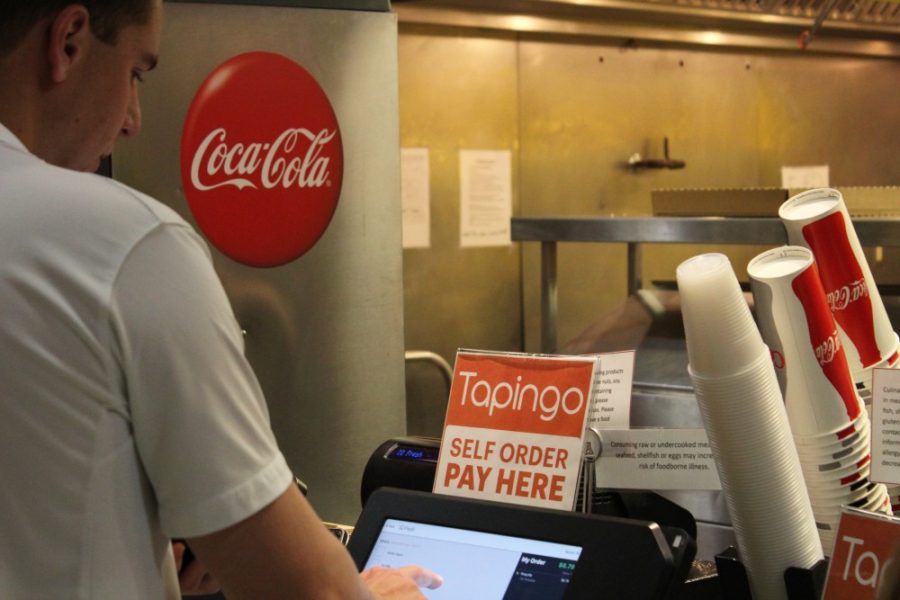Hundreds of students know what it’s like to place an order on Tapingo, but not many know what happens between that moment and the moment when the food arrives at their doors. That’s where Tapingo couriers kick in to gear.
Josh Hempel and Alexis Whitaker have each been working as Tapingo couriers for about two years. They are among those who make sure that student orders get from point A to point B.
Whitaker is a full-time University of Arizona student in her junior year studying journalism. Hempel isn’t a student, but spends a lot of time on campus for deliveries.
“I love Tapingo,” Whitaker said. “It allows me to be my own boss. It allows me to pick my own schedule.”
Both Hempel and Whitaker were willing to speak about their experiences as workers who perform what they claim is an underappreciated role on campus.
When an order comes in, a notification will pop up on a courier’s screen telling them the restaurant they need to go to and the address they’ll deliver to.
Couriers make the decision whether or not to accept the order based on the route and schedule they’ve decided for themselves, similar to how Uber drivers work.
Unlike Uber drivers, Tapingo couriers are paid an hourly wage, not solely based on how many deliveries they make.
Wages vary, but at the highest end drivers can make up to $25 an hour, according to the Tapingo website.
Couriers also differ in how many hours a week they put in. Each shift lasts four hours. Couriers can choose as many or as few shifts as they would like.
Veteran couriers like Hempel may put in over 80 hours a week. Whitaker said that she puts in anywhere from 24 to 48 hours a week, depending on her schedule.
Tapingo couriers work as independent contractors. Under this system, they choose their own hours and get as much out of their job as they put in. Both Hempel and Whitaker appreciate this aspect of their jobs.
“I plan Tapingo around my life,” Whitaker said.
After accepting an order, the courier travels to whatever eatery the order is for and picks up the food. They may have one order or many.
The couriers never handle the food. Their goal is to deliver it from one place to another.
“Basically we’re a middleman, we’re a third party entity in the end,” Hempel said. “A lot of people don’t realize that.”
Once the food is picked up, couriers proceed to the address the customer requests. Couriers could be delivering up to 10 orders in an hour.
Both Hempel and Whitaker felt that this is the point at which communication become critical.
Couriers text the person that made the order to let them know that they are on their way and then again to let them know that they have arrived.
“Any time you have an order and you get a text message [from] the courier … you just can send, like, a thumbs up emoji,” Hempel said. “That just is letting us know that you have received the message that we just sent.”
Once the courier establishes that the customer is aware that they’ve arrived, they can move on to communicating with their next orders. Couriers work to ensure that their route goes as smoothly as possible and communication is a key part.
However, too much communication becomes a problem. Couriers are constantly on the move, walking, biking or driving. According to Whitaker, too many messages while on the road is a distraction that can lead to accidents.
“The only way we’re going to get paid is if the food gets delivered to you,” Whitaker said. “So if you could please be mindful of that. We’re getting to you as fast as we can because the faster we get to you, the quicker we can move on to the next order.”
Occasionally, an order is not picked up. When this happens, the courier does whatever they can to deliver the order, sometimes waiting at drop off points for 15 minutes. This delay causes a domino effect that leads to every other order on that delivery run being later too.
Hempel estimated that on an average night it can be up to three or four orders that never get claimed. He found this number surprisingly high, given the fact that the student is still charged whether or not they claim the order.
“It’s a lack of appreciation, I feel like, for money,” Hempel said.
At the end of the night, both Hempel and Whitaker said that they enjoyed their jobs for the flexibility and good pay, though they both indicated a desire for better overall communication between couriers and students.
“It’s a grind,” Hempel said. “But it’s a good grind.”









